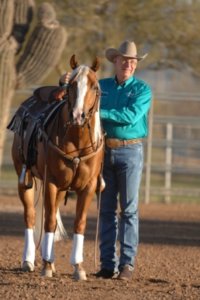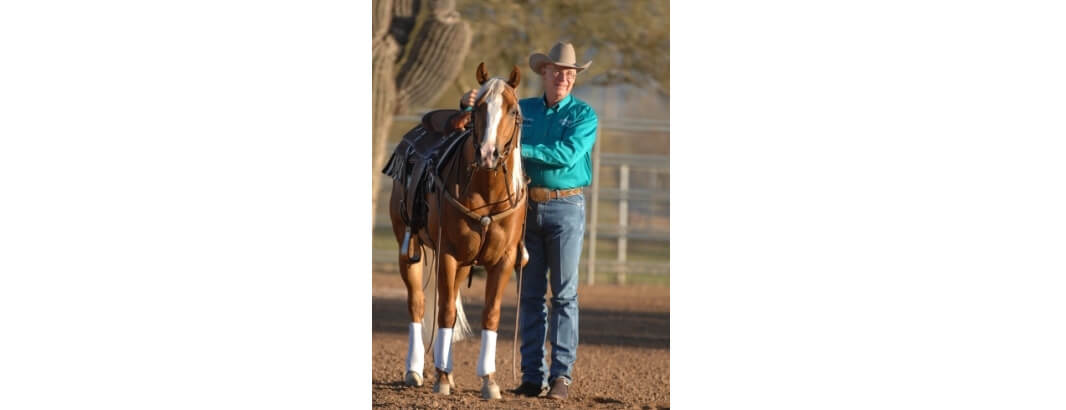Speed Control and the Left Sided Syndrome
by Al Dunning
Hi Al,
I have been working on controlling my horse’s speed during the lope. What are some correct cues to use when I want my horse to slow down or speed up?
Mario
Mario,
This is not a simple answer but I will try. Speed control starts with a good seat. When I speed up, I ride light and when I slow, I sit deep and heavy. Second are my legs. I bump the belly with a slow rhythm when going slow and firm up and increase the rhythm to motivate a faster speed. Third is the rein control. To speed up I flex the poll and have a light contact. To slow down, I have trained my horse to accept the pull, give his poll, lift his shoulders and round his back. All of these combined with repetition of training circles of various speeds on demand, make my horse rate his speed and stay in proper form. I hope this helps.
Al
After studying horses, horsemanship, and numerous competitive events for over 40 years, I have concluded that we ingrain “left” into our equine athletes. Consider these facts:
-

Photo credit Cappy Jackson After the foal is born, we halter break them, leading with our right hand on their left side and we continue leading the horse on the left side their entire life span.
- When we blanket and saddle, we approach from the left side. Then comes the halter and bridle, which are both handled from the left.i
- For those of you that remember the old side-by-side trailers that were popular before slant loads, these also contributed to the “left syndrome.” When hauling a single horse, you hauled them on the left side because of pot holes and tire problems on the shoulder side.
- Next comes riding. After catching and leading, we saddle on the left, mount on the left, solidifying the left eye relationship. As if this is not enough, most riders never truly straighten the saddle after mounting and it is out of balance—to the left.
- And there is more! The majority of riders are right handed. When working, they pull more firmly with the right, so the horse is stiffer on that side and softer on the left. Because of all the attention to that particular side, most horses bend, turn, and respond better in that direction. In addition, most are also right leg dominant, which adds to the horse going better left and taking that left lead.
I sat in Fort Worth, Texas watching the NCHA futurity preliminaries several years ago. The 3-year-old cutting horses performed well except for a certain percentage that faded into the left corner, not holding their position on-line. Many that went deep toward that side of the herd quit working and didn’t come back without the rider’s assistance. That left side of Will Rogers Coliseum was like a magnet, misguiding the horse’s attention away from where it should be—on the cow.
To remedy this left syndrome problem, we must concentrate on the right side. Start in the breaking process by focusing your attention on the right side of the horse. When you mount, be sure to fully straighten the saddle. Ride balanced and work two to three times more on the right turns, circles, and leads. Be sure to incorporate your left leg and hand purposefully into your everyday rides. Softening your right hand and leg will help also. When riding with one hand (left) on the reins, keep your hand neutral and in the middle and when pulling, pull straight, not to your left hip.
In conclusion, to fix what’s “left” in yourself and your horse…think right!
Published November Issue

Al Dunning of Scottsdale, Arizona, is one of the most respected horsemen in the industry. Al and his students have garnered 48 world and reserve world championships. He has held numerous national leadership positions and earned multiple honors including induction into the AzQHA Hall of Fame. His 50+ years of experience as a professional trainer has led him to produce books, DVDs, clinics, Team AD online mentoring, and AD Tack, selling all the tack he uses as well as his books and videos. Al’s ability to reach people comes from his love of horses and out of respect to the mentors in his own life. For more information, visit https://www.aldunning.com or www.aldunningsadtack.com.






